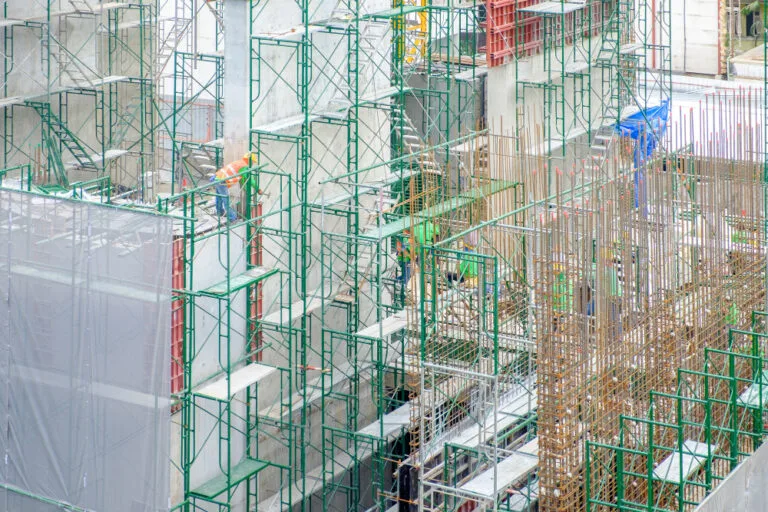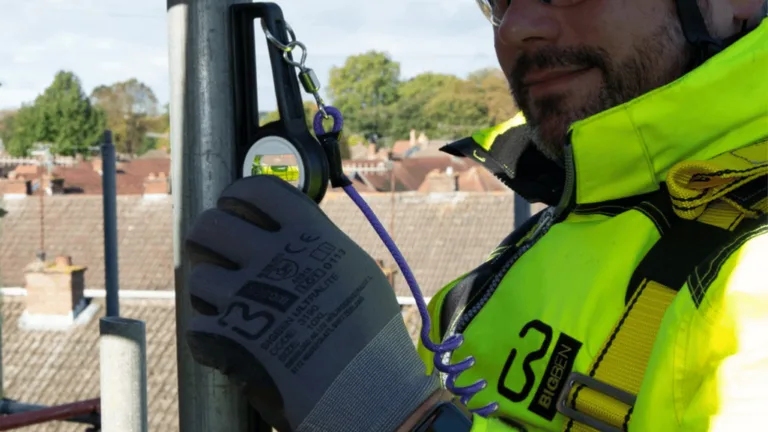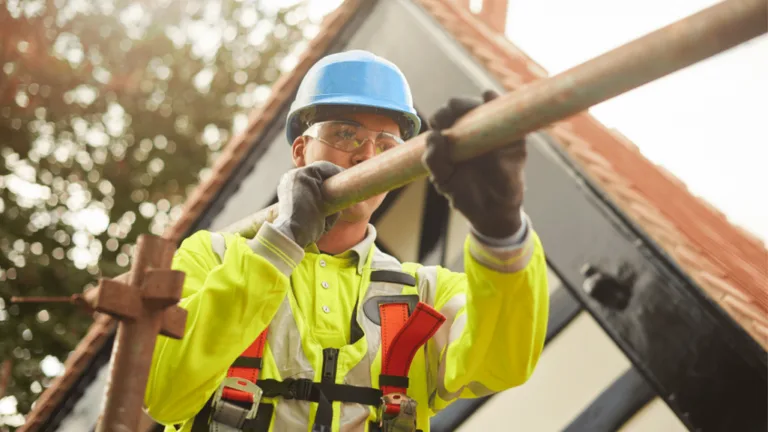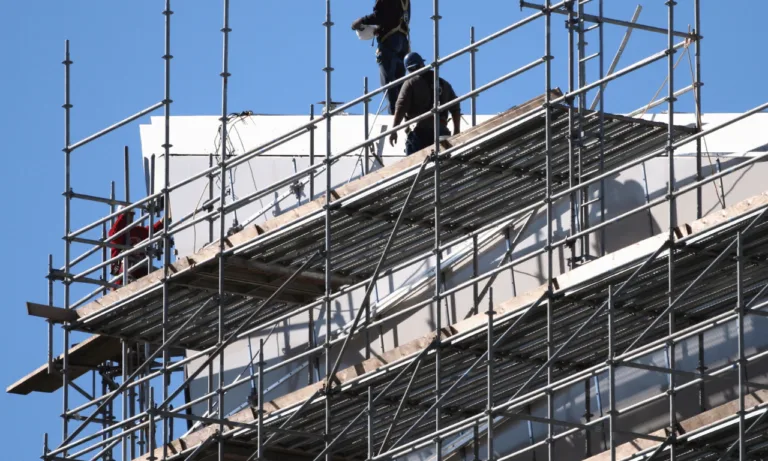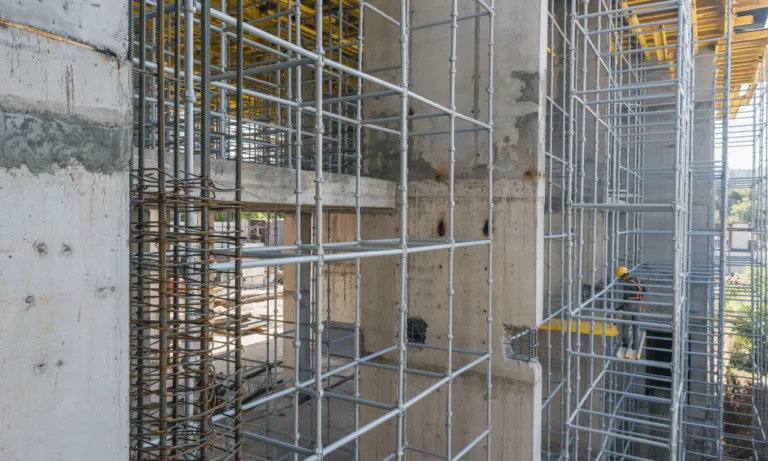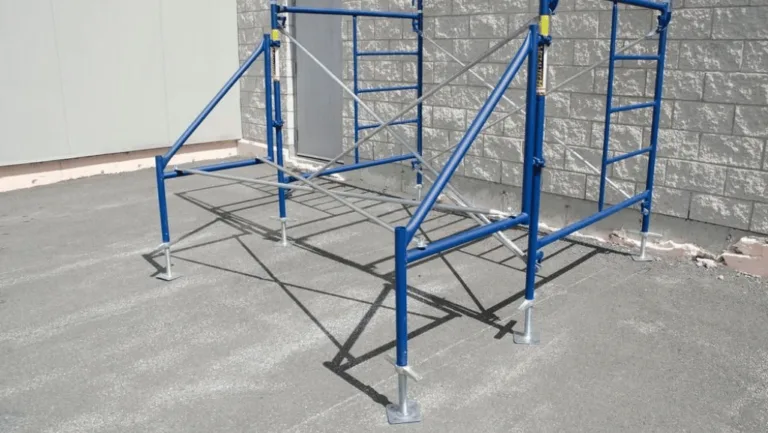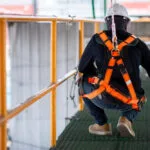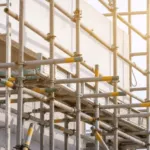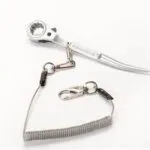Phone:
(+65)8319-0742
Welcome to our comprehensive guide on scaffold access and egress safety protocols. When working with scaffolding, it is crucial to prioritize the well-being of workers and comply with relevant regulations. In this article, we will discuss important scaffolding safety tips and highlight the significance of following best practices.
Scaffolding work presents various potential hazards, including falls, collapses, and falling objects. To prevent accidents and ensure a safe working environment, it is essential to adhere to OSHA standards and guidelines. By implementing effective safety protocols, you can protect workers and minimize the risk of incidents.
Throughout this article, we will explore scaffold construction guidelines, the importance of proper maintenance of scaffolding equipment, the need for fall protection measures, compliance with OSHA scaffold standards, and the best practices for scaffold use and safety.
- Comply with OSHA scaffold standards to ensure a safe working environment.
- Follow scaffold construction guidelines for stable and structurally sound scaffolds.
- Maintain scaffolding equipment regularly to ensure its proper functioning.
- Implement fall protection measures, such as guardrails and personal fall arrest systems, to prevent falls.
- Adhere to the best practices for scaffold use, including proper training and regular inspections.
Understanding Scaffold Construction Guidelines
When it comes to scaffold construction, following proper guidelines is crucial to ensure the safety and integrity of the structure. Scaffold construction guidelines outline the necessary steps and procedures for assembly, ensuring stability and reducing the risk of accidents. By adhering to these guidelines, construction workers can create a secure and reliable scaffold that meets industry standards.
One key aspect of scaffold construction guidelines is the use of suitable materials and equipment. High-quality materials, such as steel or aluminum, are recommended for scaffold components as they provide durability and strength. Additionally, utilizing the right equipment, such as adjustable base plates and locking systems, ensures a secure scaffold that can withstand varying loads.
Another important consideration in scaffold assembly is ensuring proper bracing and support. Scaffold construction guidelines provide instructions on the correct positioning of braces and supports to maintain stability and prevent collapse. By following these guidelines, workers can minimize the risk of accidents caused by scaffold failure.
Proper Scaffold Assembly Procedures
Following scaffold construction guidelines involves a series of steps to ensure proper assembly and installation. Here is a general outline of the process:
- Prepare the ground: Before scaffold assembly, ensure the ground is level and stable. Remove any obstacles or debris that may hinder the assembly process.
- Set up the base: Begin by installing the base plates and adjust them to achieve the desired height. Secure the base plates to prevent movement during construction.
- Build the vertical frames: Erect the vertical frames, ensuring they are plumb and properly interlocked. Connect the frames securely to maintain stability.
- Install the cross braces: Attach the cross braces diagonally between the vertical frames. Ensure they are correctly placed and securely fastened to provide lateral support.
- Add platforms: Install scaffold platforms at designated heights, making sure they are level and tightly secured. Use guardrails and toe boards to enhance safety.
- Inspect and test: Before accessing the scaffold, perform a thorough inspection to ensure all components are correctly installed and functioning as intended. Test the stability and integrity of the structure.
Familiarizing yourself with scaffold construction guidelines and following these procedures is essential to guarantee the safety and stability of scaffolds. By prioritizing adherence to these guidelines, construction workers can create a secure working platform that minimizes the risk of accidents and ensures the well-being of everyone involved.
Maintaining Scaffolding Equipment for Safety
Proper maintenance of scaffolding equipment is crucial for ensuring the safety of workers and preventing accidents. Regular inspections, repairs, and replacements are essential to keep the equipment in optimal working condition. By prioritizing scaffolding equipment maintenance, employers can create a secure work environment and minimize the risk of incidents.
Inspections should be conducted at regular intervals to identify any signs of wear, damage, or deterioration. This includes checking for loose or missing components, structural integrity issues, and potential hazards. Inspectors should have a thorough understanding of scaffolding construction guidelines and be trained to recognize potential risks.
Repairing damaged or faulty equipment promptly is vital to prevent further deterioration and potential accidents. Any identified issues should be addressed immediately, and damaged parts should be repaired or replaced as per the manufacturer’s instructions. It is crucial to ensure that only compatible components are used during repairs to maintain the equipment’s integrity.
In addition to inspections and repairs, regular maintenance routines should be established to keep the equipment in optimal working condition. This includes cleaning and lubricating parts, keeping the equipment protected from adverse weather conditions, and storing it properly when not in use. Compliance with the manufacturer’s maintenance instructions is essential to extend the lifespan of the equipment.
To further illustrate the importance of scaffolding equipment maintenance, refer to the table below:
| Maintenance Task | Frequency |
|---|---|
| Inspection | Before each use and at regular intervals |
| Repair and Replacement | As soon as damage or defects are identified |
| Cleaning and Lubrication | After each use |
| Protection and Storage | When not in use or during adverse weather |
By adhering to a comprehensive maintenance routine, employers can ensure that scaffolding equipment remains safe and reliable for workers to use. Proper maintenance practices minimize the risk of accidents, protect the well-being of workers, and promote a culture of safety in the workplace.
Implementing Scaffold Fall Protection Measures

Fall protection measures play a crucial role in ensuring the safety of workers when working on scaffolds. Accidents involving falls from scaffolding can cause severe injuries and even fatalities. It is essential to implement effective fall protection strategies and adhere to safety regulations to prevent such incidents.
There are various safety devices and systems available to protect workers from falls while working at heights. These include:
- Guardrails: Installing guardrails around the perimeter of the scaffold provides a physical barrier that helps prevent accidental falls. The guardrails should be sturdy, properly installed, and meet the required height and strength standards.
- Personal Fall Arrest Systems (PFAS): PFAS consists of a full-body harness, a lanyard or lifeline, and an anchor point. In the event of a fall, the PFAS minimizes the impact and prevents the worker from hitting the ground. It is crucial to ensure that PFAS equipment is properly fitted, regularly inspected, and used correctly.
- Safety Nets: Safety nets are positioned underneath the scaffold to catch workers in case of a fall. They provide an additional layer of protection when other fall arrest systems may fail. Safety nets should be properly installed, inspected regularly, and meet the required strength and size specifications.
Proper training is essential for workers to understand the correct use of fall protection equipment and systems. They must be trained on how to inspect, assemble, and use the equipment safely. Employers should ensure that workers receive comprehensive training that covers the specific fall protection measures relevant to their tasks.
By implementing scaffold fall protection measures, employers can significantly reduce the risk of falls and create a safer working environment for their employees. Additionally, regular inspections, maintenance, and repairs of fall protection equipment are essential to ensure their effectiveness and reliability.
Comparison of Scaffold Fall Protection Systems
| Fall Protection System | Advantages | Disadvantages |
|---|---|---|
| Guardrails | Provides continuous protection, does not require worker intervention | May obstruct certain work activities, requires proper installation and maintenance |
| Personal Fall Arrest Systems (PFAS) | Allows mobility, suitable for various work environments | Requires proper training and correct usage, potential for impact injuries during a fall |
| Safety Nets | Provides collective protection, can catch multiple workers | Requires proper installation, regular inspections, and maintenance |
It is crucial to choose the most appropriate fall protection system based on the specific work environment and requirements. A comprehensive assessment, proper training, and regular equipment inspections will help ensure the effectiveness of the chosen fall protection measures.
Compliance with OSHA Scaffold Standards

Adhering to the OSHA (Occupational Safety and Health Administration) scaffold standards is essential for employers and workers to ensure a safe working environment. These standards outline regulations and requirements related to scaffold access and egress, aiming to prevent accidents and injuries.
By following OSHA scaffold standards, employers demonstrate their commitment to the well-being of their workers and compliance with industry best practices. These standards provide guidelines for proper scaffold construction, maintenance, and fall protection measures, addressing key aspects of scaffold safety.
Key OSHA Scaffold Standards and Guidelines
Here are some key OSHA scaffold standards and guidelines that employers and workers should be familiar with:
- Scaffold assembly: OSHA mandates the use of proper construction techniques and materials to ensure the stability and structural integrity of scaffolds. This includes considerations such as base plates, guardrails, and cross-bracing.
- Access and egress: OSHA requires safe and secure access to scaffolds, including the use of ladders, stair towers, or ramps. These access points should be properly maintained and positioned to minimize any potential hazards.
- Inspections and maintenance: Regular inspections for scaffolding equipment are essential to identify and address any damage or defects. OSHA recommends conducting inspections before each work shift and after any incidents that may affect the scaffold’s safety.
- Fall protection: OSHA requires the implementation of fall protection measures, such as guardrails, personal fall arrest systems, or safety nets, to prevent workers from falling from scaffolds. Employers must provide training on the proper use and maintenance of fall protection equipment.
Compliance with these OSHA scaffold standards is crucial to protect workers from scaffold-related accidents and injuries. Employers should prioritize the safety of their workers by creating a culture that values adherence to these standards and invests in proper training and equipment maintenance.
Ensuring compliance with OSHA scaffold standards not only reduces the risk of accidents but also demonstrates a commitment to workplace safety. By following these standards, employers foster a safe and productive working environment for their employees.
| Benefits of Compliance with OSHA Scaffold Standards |
|---|
| Enhanced worker safety |
| Prevention of accidents and injuries |
| Reduced liability and potential legal penalties |
| Improved productivity and morale |
| Positive company reputation |
Best Practices for Scaffold Use and Safety

Implementing best practices for scaffold use is crucial for maintaining a safe working environment. By following these guidelines, employers and workers can minimize the risk of accidents and ensure optimal safety conditions. Here are some key best practices to keep in mind:
1. Proper Training
Ensure that all workers who will be using scaffolds receive proper training on scaffold erection, dismantling, and usage. Training should cover topics such as scaffold assembly procedures, fall protection measures, and recognizing potential hazards. Regular refresher courses and ongoing training can reinforce knowledge and promote safety awareness.
2. Secure Footing
Before accessing scaffold platforms, it is essential to check and ensure that the structure has a stable and secure footing. The ground should be level, and any soft or unstable surfaces should be adequately supported. Plankings and platforms should also be free from debris, slippery substances, or any obstructions that could cause slips, trips, or falls.
3. Load Capacity Awareness
Understanding the load capacity of a scaffold is vital to prevent overloading and potential collapses. Before loading a scaffold with materials or equipment, refer to the manufacturer’s specifications and load chart guidelines. Avoid exceeding the recommended weight limits, and distribute the load evenly to maintain stability.
4. Regular Inspections
Scaffolds should undergo regular inspections, both before each use and at specified intervals. Inspections should cover all components, including guardrails, planks, connectors, and ties. Look for signs of damage, wear, or any structural compromises. Any identified issues should be addressed promptly, and damaged components should be replaced.
5. Fall Protection Measures
Provide and enforce the use of appropriate fall protection measures when working on scaffolds. This may include the installation of guardrails, the use of personal fall arrest systems, or the implementation of safety nets. Ensure that workers are trained in the correct use of these devices and practice safe behaviors when working at heights.
6. Communication and Supervision
Effective communication and supervision are crucial for maintaining scaffold safety. Appoint competent individuals to oversee scaffold operations and ensure that workers have a clear understanding of their roles and responsibilities. Encourage open communication about safety concerns and address any issues promptly to prevent accidents.
Implementing these best practices for scaffold use and safety can significantly reduce the risk of accidents and create a safer working environment. By prioritizing training, secure footing, load capacity awareness, regular inspections, fall protection measures, and effective communication, employers and workers can work together to ensure the wellbeing of all individuals involved.
Conclusion
Ensuring safety protocols for Scaffold Access and Egress is crucial in preventing accidents and creating a secure working environment. By following scaffolding safety tips and complying with regulations, workers can mitigate hazards and protect their well-being.
Proper scaffold construction guidelines, including appropriate assembly procedures and the use of suitable materials, are essential for maintaining stability and structural integrity. Regular scaffolding equipment maintenance, such as inspections and repairs, ensures equipment is in optimal condition to minimize accidents.
Implementing scaffold fall protection measures, such as guardrails and personal fall arrest systems, safeguard workers from falls. Compliance with OSHA scaffold standards provides a framework for creating a safe working environment and protecting workers’ rights.
By embracing best practices for scaffold use, employers and workers can foster a culture of safety. This includes proper training, secure footing, load capacity awareness, and regular inspections to identify potential risks and take necessary preventive measures.
It is the responsibility of employers and workers to prioritize safety, not only for Scaffold Access and Egress but throughout the entire scaffold use process. By incorporating these guidelines, complying with regulations, and maintaining proper equipment, we can create a safer working environment for all.
FAQ
What are some safety tips for scaffold access and egress?
Some safety tips for scaffold access and egress include: always using designated access points, maintaining three points of contact while climbing or descending, ensuring that ladders or stairways are properly secured, and being cautious of any obstructions or slippery surfaces.
What are the regulations for scaffolding safety?
The regulations for scaffolding safety are set by OSHA. They include guidelines for proper scaffold construction and assembly, the use of fall protection measures, regular inspections, and training requirements for workers. It is crucial to comply with these regulations to prevent accidents and maintain a safe working environment.
What are the construction guidelines for scaffolds?
The construction guidelines for scaffolds include using suitable materials for construction, ensuring proper foundation and stability, securing scaffold components together, and providing adequate guardrails and toe boards. Following these guidelines is essential to ensure the safety and stability of scaffolds.
Why is it important to maintain scaffolding equipment?
It is important to maintain scaffolding equipment to ensure worker safety. Regular inspections, repairs, and replacements of equipment are necessary to identify and address any potential hazards. Well-maintained equipment reduces the risk of accidents, improves the structural integrity of scaffolds, and promotes a safe working environment.
What are the fall protection measures for working on scaffolds?
Fall protection measures for working on scaffolds include the use of guardrails, personal fall arrest systems, safety nets, and proper training on the correct use of fall protection equipment. These measures are crucial to prevent falls from heights and protect workers from serious injuries or fatalities.
What are the OSHA scaffold standards?
The OSHA scaffold standards set regulations and requirements for scaffold access and egress. They specify criteria for scaffold construction, including load capacity, structural integrity, and stability. It is important for employers and workers to comply with these standards to ensure a safe working environment and prevent accidents.
What are the best practices for scaffold use and safety?
Best practices for scaffold use and safety include providing proper training to workers, ensuring secure footing and stable platforms, conducting regular inspections, and being aware of the scaffold’s load capacity. Following these best practices promotes safe working conditions and minimizes the risk of accidents or injuries.



